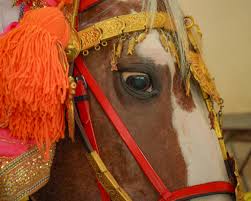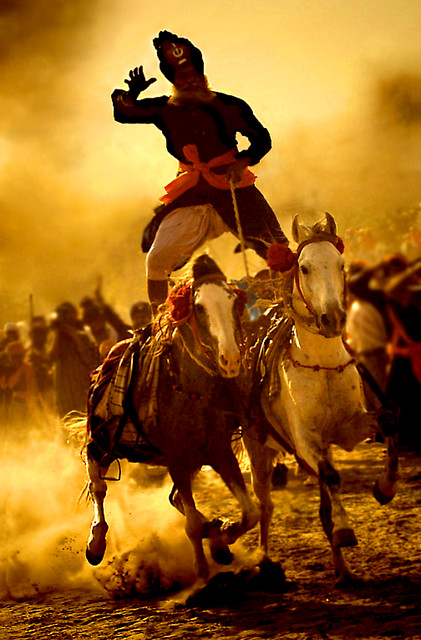Explore Akbarpur Khudal, a village in Punjab, where Guru Gobind Singh rescued a Sikh in 1706, with a historic gurdwara and captivating tales of justice.
Discover the history of Dal Singar, the famed warhorse of Guru Gobind Singh, and its significance in Sikh heritage.
Discover the heroic tale of Roshan Singh, a Sikh warrior who single-handedly defeated a lion, showcasing bravery alongside Guru Gobind Singh and Bahadur Shah.
Discover Hola Mahalla, a lively Sikh festival following Holi, featuring martial arts displays and colorful processions at Anandpur Sahib. Celebrate heritage!
AJAB SINGH (d. 1705). son of Bhai Mani Ram, a Rajput Sikh of `Alipur in Multan district, now in Pakistan, came to Anandpur with his father and four brothers, and received the rites of initiation at the inauguration of the Khalsa by Guru Gobind Singh on the Baisakhi day of 1699. He remained in Guru Gobind Singh`s retinue until his death in the battle of Chamkaur on 7 December 1705.
CHAUBIS AVTAR, a collection of twenty-four legendary tales of twenty-four incarnations of the god Visnu, forms a part of Bachitra Natak, in Guru Gobind Singh`s Dasam Granth. The complete work contains a total of 4,371 verseunits of which 3,356 are accounted for by Ramavtar and Krishnavtar. The shortest is Baudh Avatar comprising three quatrains, and the longest is Krishnavtar, with 2,492 verseunits, mostly quatrains. The introductory thirty-eight chaupais or quatrains refer to the Supreme Being as unborn, invisible but certainly immanent in all objects.
DIAL DAS, son of Gaura and grandson of the celebrated Bhai Bhagatu, lived at Bhuchcho, now in Bathinda district of the Punjab, at the time of Guru Gobind Singh`s journey through those parts in 1706. At the village of Bhagu, Dial Das took the rites of amrit at the hands of Guru Gobind Singh and received the name of Dial Singh. There after the Guru and the Sikhs partook of the food he had brought for them. It so happened, says the Sakhi Pothi, that a few more Sikhs arrived after all the food had been consumed. Dial Singh sold his gold ring and bought fresh victuals for the newcomers,





